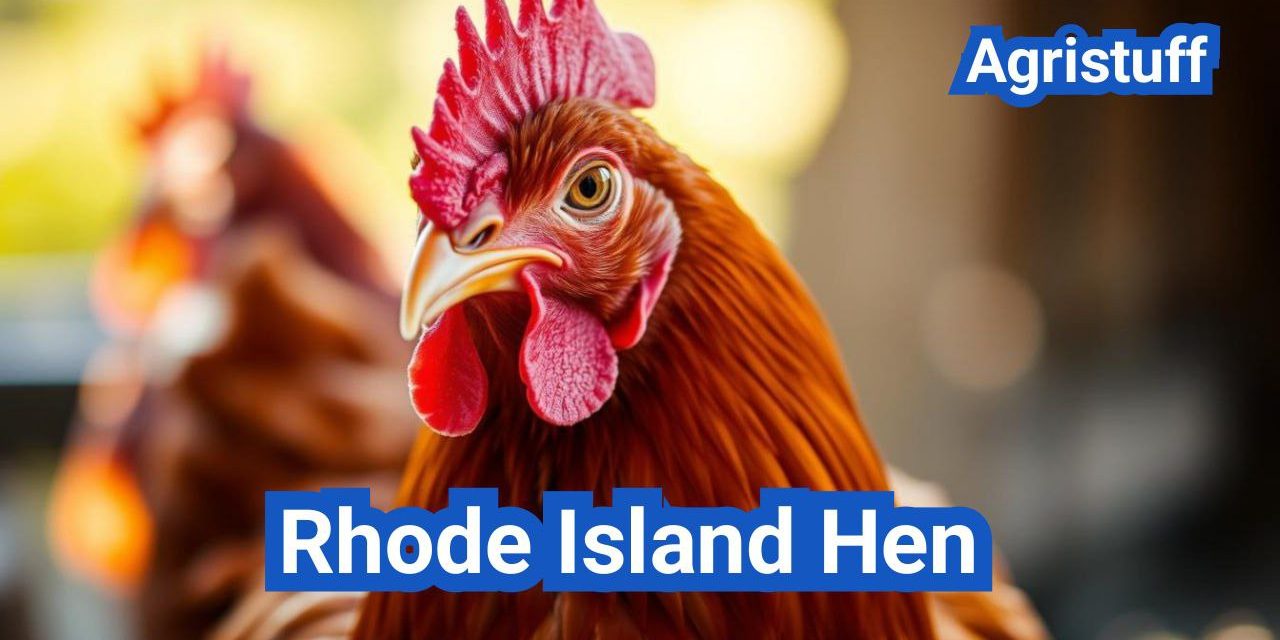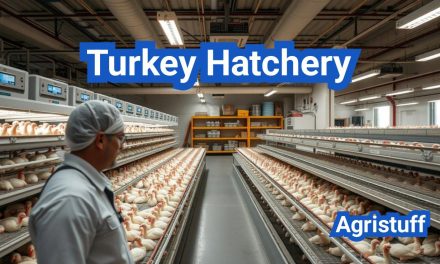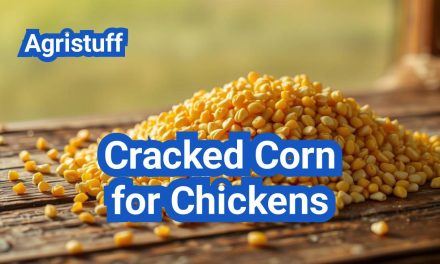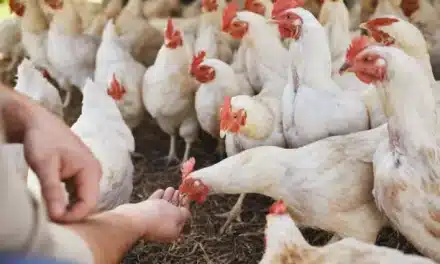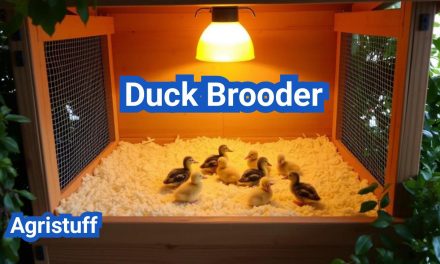The Rhode Island Red Hen is a beloved breed among backyard chicken enthusiasts, renowned for its exceptional egg-laying abilities and hardiness. Developed in the late 19th century in Rhode Island and Massachusetts, this breed was created by cross-breeding Oriental birds like the Malay with brown Leghorn birds from Italy.
This heritage has endowed the Rhode Island Hen with a robust nature and prolific egg-laying capabilities, making it a favorite among those who keep backyard egg-laying chickens. Understanding the differences between a Rhode Island Hen and a rooster is crucial for those looking to start or maintain a healthy flock.
Key Takeaways
- The Rhode Island Red Hen is a popular choice for backyard chicken keepers.
- This breed is known for its hardiness and egg-laying abilities.
- Understanding the differences between hens and roosters is essential.
- The breed has a rich history dating back to the late 19th century.
- Rhode Island Hens are prolific layers, producing a significant number of eggs.
The History and Origin of Rhode Island Red Chickens
The Rhode Island Red chicken breed has a rich history that dates back to the late nineteenth century. This breed was developed through a process of selective breeding involving birds of Oriental origin and brown Leghorn birds from Italy.
Development in Rhode Island and Massachusetts
The development of the Rhode Island Red involved cross-breeding various chicken breeds. Birds of Oriental origin, such as the Cochin, Java, Malay, and Shanghai, were bred with brown Leghorn birds from Italy. This careful selection and breeding process resulted in a robust and prolific layer.
The breeding program that created the Rhode Island Red was initiated by farmers in Rhode Island and Massachusetts. They aimed to produce a chicken that was not only a good layer but also hardy and adaptable to the local climate.
Recognition as an Official Breed
The Rhode Island Red was officially recognized as a distinct breed in 1904. This recognition came after years of selective breeding and refinement of the breed’s characteristics. The official acknowledgment solidified the breed’s place in American poultry.
The breed’s popularity soared following its official recognition, as it became known for its excellent egg-laying abilities and friendly disposition.
Rhode Island Red as the State Bird
In 1954, the Rhode Island Red was designated as the official state bird of Rhode Island. This honor reflected the breed’s significance to the state’s history and its importance in American poultry.
The Rhode Island Red’s status as the state bird underscores its cultural and historical importance. It symbolizes the breed’s enduring legacy and its contribution to the state’s heritage.
Understanding the Rhode Island Hen: Characteristics and Appearance
The Rhode Island Hen is a beloved breed among backyard chicken keepers, known for its rich, dark red plumage and friendly demeanor. This breed’s distinctive appearance makes it a standout in any flock.
Physical Traits and Coloration
The Rhode Island Hen is characterized by its deep red color, which can range from a lustrous deep red to almost black. The tail is mostly black, adding a touch of elegance to its overall appearance. The comb, earlobes, and wattles are a vivid red, contributing to the breed’s striking visual appeal.
Standard Weights by Age
Rhode Island Hens are known for their robust build. The standard weights for this breed vary by age. Typically, a mature Rhode Island Hen weighs around 7-8 pounds, while pullets (young hens) weigh less, around 5-6 pounds at maturity.
Single Comb vs. Rose Comb Varieties
The Rhode Island Hen comes in two comb varieties: single comb and rose comb. The single comb variety is more common and recognized for its straightforward, upright comb. In contrast, the rose comb is flatter and has a more intricate design, with small, rounded projections along its length. Both varieties are acceptable according to breed standards, and the choice between them often comes down to personal preference.
Understanding these characteristics is essential for identifying and appreciating the Rhode Island Hen breed. Whether you’re a seasoned poultry keeper or a beginner, recognizing the breed’s unique traits will enhance your experience with these remarkable birds.
Rhode Island Hen vs. Rooster: How to Tell Them Apart

Understanding the differences between Rhode Island Hens and Roosters is crucial for maintaining a harmonious and productive flock. While both share similar characteristics, there are key visual and behavioral differences to look out for.
Visual Differences Between Hens and Roosters
One of the primary ways to distinguish between a Rhode Island Hen and a Rooster is through their physical characteristics. Roosters typically have more vibrant plumage, with longer hackle feathers and a more pronounced comb and wattle compared to hens.
Here is a summary of the main visual differences:
| Characteristic | Hens | Roosters |
|---|---|---|
| Plumage | Less vibrant, shorter hackle feathers | More vibrant, longer hackle feathers |
| Comb and Wattle | Smaller | Larger, more pronounced |
| Tail Feathers | Shorter, less curved | Longer, more curved |
Behavioral Distinctions
Beyond physical differences, the behavior of Rhode Island Hens and Roosters can also help identify their sex. Roosters are generally more assertive and vocal, often crowing loudly. Hens, on the other hand, are typically more docile and quiet, with the occasional cluck.
“Roosters will often display courtship behaviors such as strutting and dancing around hens, while hens will exhibit broodiness and nesting behaviors.”
When Sex Characteristics Become Apparent
Sex characteristics in Rhode Island Reds become more apparent as the chickens mature. Typically, by around 16-20 weeks of age, the differences between hens and roosters become more distinguishable.
Key Takeaways:
- Visual differences include plumage, comb size, and tail feathers.
- Behavioral differences involve assertiveness, vocalization, and courtship behaviors.
- Sex characteristics become apparent around 16-20 weeks of age.
The Rhode Island Hen’s Impressive Egg Production
With their ability to produce a high volume of eggs, Rhode Island Hens have earned a reputation as one of the most prolific laying breeds. Their egg production capabilities make them a favorite among backyard chicken keepers and commercial farmers alike.
Egg Production Capabilities
Rhode Island Hens are known for their consistent and high egg production. On average, a healthy Rhode Island Hen can produce around 200-300 brown eggs per year. This impressive production level is one of the key reasons they remain a top choice for many.
Key factors influencing egg production include:
- Nutrition: A balanced diet rich in calcium and protein.
- Health: Regular health checks and a clean living environment.
- Lighting: Adequate light exposure, especially during winter months.
Egg Size, Color, and Quality
The eggs laid by Rhode Island Hens are typically large to extra-large in size and have a rich, brown color. The quality of these eggs is renowned for their strong shells and rich yolks.
“The brown eggs from Rhode Island Hens are not only abundant but also of superior quality, making them highly sought after.”
The egg size can vary slightly depending on the age and health of the hen, as well as nutritional factors. However, the consistent brown color is a hallmark of this breed.
Maintaining Consistent Production Year-Round
To maintain consistent egg production throughout the year, it’s crucial to provide Rhode Island Hens with a comfortable and stress-free living environment. This includes a well-ventilated coop, adequate nesting boxes, and protection from extreme temperatures.
Tips for year-round production:
- Ensure a balanced diet that includes essential nutrients.
- Provide supplemental lighting during the shorter winter days.
- Maintain a clean and healthy living environment.
By following these guidelines, you can enjoy a steady supply of high-quality eggs from your Rhode Island Hens throughout the year.
How to Set Up the Perfect Rhode Island Hen House

A well-designed Rhode Island Hen house is essential for maximizing egg production and ensuring the well-being of your flock. Providing a comfortable and safe living environment is crucial for the health and productivity of Rhode Island Hens.
Space Requirements and Coop Design
When it comes to housing Rhode Island Hens, space is a critical factor. The coop should provide at least 3-4 square feet of space per bird, allowing them to roost and move around comfortably. A well-ventilated coop is also essential for maintaining the health of your hens. Ensure that the coop is predator-proof, with sturdy walls and a secure roof.
The design of the coop should also take into account the ease of cleaning and egg collection. A well-designed coop will make it easier to manage your flock and keep them healthy.
Nesting Box Setup for Maximum Egg Production
Nesting boxes are a critical component of the Rhode Island Hen house, as they provide a safe and comfortable place for your hens to lay their eggs. One nesting box per 3-4 hens is recommended, and they should be placed in a quiet, dark area of the coop. The nesting boxes should be lined with soft bedding, such as straw or wood shavings, to encourage egg laying.
To maximize egg production, ensure that the nesting boxes are easily accessible and that the hens feel secure when laying their eggs.
Run Space and Free-Range Considerations
In addition to the coop, Rhode Island Hens require adequate run space to exercise and roam. A minimum of 8-10 square feet of run space per bird is recommended, although more space is always better. The run should be securely fenced to protect your hens from predators and prevent them from escaping.
For those considering free-ranging their Rhode Island Hens, it’s essential to weigh the benefits against the potential risks. Free-ranging can provide hens with a more natural environment and varied diet, but it also increases the risk of predation and disease transmission.
Complete Feeding Guide for Rhode Island Hens
The nutritional requirements of Rhode Island Hens vary across different life stages, necessitating a tailored feeding approach. Providing the right nutrients at the right time is crucial for their health, productivity, and overall well-being.
Nutritional Requirements at Different Life Stages
Rhode Island Hens have different nutritional needs at various stages of their life. For instance, chicks require a starter feed rich in protein to support their rapid growth during the initial weeks. As they grow into pullets and eventually laying hens, their dietary needs shift towards layer feed that supports egg production.
During the starter phase (0-8 weeks), chicks need a feed with 18-20% protein content. As they transition to the grower phase (8-14 weeks), the protein content can be slightly reduced to around 16%. For laying hens, a diet with 16-18% protein and adequate calcium is essential for egg production.
Essential Supplements for Optimal Health
While a well-balanced commercial feed should meet most of the nutritional needs of Rhode Island Hens, certain supplements can enhance their health. Calcium supplements, such as crushed oyster shells, can support strong eggshell production. Additionally, probiotics can aid in digestive health, promoting overall well-being.
It’s also beneficial to provide grit to help with digestion, especially if your hens are free-ranging. Grit helps grind food in the gizzard, improving nutrient absorption.
Feeding Schedule and Amounts
Establishing a consistent feeding schedule is vital for the health of Rhode Island Hens. Generally, laying hens should be fed twice a day, with the amount depending on their age, size, and level of activity. A good rule of thumb is to provide about 1/4 to 1/3 pound of feed per hen per day.
It’s also important to ensure that fresh water is always available. Monitoring their feed consumption and adjusting as necessary can help maintain optimal health and egg production.
Managing Your Rhode Island Hen’s Lifespan and Health

Understanding the factors that influence the lifespan of your Rhode Island Hen is crucial for ensuring their health and productivity. A combination of proper diet, suitable living conditions, and regular health interventions can significantly impact their longevity.
Average Lifespan and Factors Affecting Longevity
The average lifespan of a Rhode Island Red hen is around 5-8 years. However, this can vary based on several factors including diet, living conditions, and health. Genetics play a significant role, with some hens being bred for longer lifespan and hardiness.
Nutritional factors are also crucial. A balanced diet that includes essential nutrients such as proteins, vitamins, and minerals is vital for maintaining health. Moreover, access to clean water and a safe living environment free from predators and diseases is equally important.
Common Health Issues and Prevention
Rhode Island Hens are generally hardy birds, but they can be susceptible to certain health issues. Common problems include:
- Respiratory infections
- Parasites such as mites and lice
- Reproductive issues
Prevention is key. Regular health checks can help identify issues early. Maintaining a clean coop, providing a nutritious diet, and ensuring access to fresh water are fundamental in preventing many common health problems.
| Health Issue | Prevention Method | Signs to Watch For |
|---|---|---|
| Respiratory Infections | Keep coop clean and dry | Coughing, sneezing, labored breathing |
| Parasites | Dust bathing, regular coop cleaning | Excessive preening, feather loss |
| Reproductive Issues | Balanced diet, avoid overbreeding | Straining to lay eggs, lethargy |
Vaccination Schedule and Regular Health Checks
A well-planned vaccination schedule is essential for protecting your Rhode Island Hens from diseases. Consult with a veterinarian to determine the best vaccination program for your flock. Regular health checks are also vital, allowing for the early detection of health issues.
Annual health checks should include monitoring for signs of illness, inspecting the coop for cleanliness, and ensuring that the hens are receiving proper nutrition. This proactive approach can significantly enhance the lifespan and health of your Rhode Island Hens.
How to Raise Rhode Island Hens as Dual-Purpose Birds

To maximize the benefits of raising Rhode Island Hens, it’s essential to understand their potential for both egg and meat production. This breed is known for its versatility, making it an attractive choice for backyard farmers and commercial producers alike.
Meat Production Qualities
Rhode Island Hens are not only prolific egg layers but also possess desirable meat production qualities. They have a robust build and grow relatively quickly, making them suitable for meat production. The meat of Rhode Island Reds is known for its flavor and texture, which is often described as rich and tender.
Balancing Egg and Meat Production
Balancing egg and meat production is crucial when raising Rhode Island Hens as dual-purpose birds. To achieve this balance, farmers must consider the nutritional needs of the hens, ensuring they receive adequate feed that supports both egg laying and growth. A well-balanced diet that includes a mix of proteins, vitamins, and minerals is essential.
It’s also important to manage the flock’s size and structure to optimize both egg production and meat quality. This may involve culling less productive hens and selecting breeding stock that exhibits desirable traits for both egg and meat production.
Harvesting Timeline and Humane Practices
The harvesting timeline for Rhode Island Hens raised for meat depends on several factors, including breed characteristics, growth rate, and market demand. Generally, hens are harvested between 16 and 20 weeks of age, when they have reached optimal weight and meat quality.
Humane practices are paramount when harvesting. Ensuring that the birds are handled carefully and humanely slaughtered is not only ethical but also contributes to better meat quality. Farmers should adhere to local regulations and guidelines regarding humane slaughter practices.
Understanding the Temperament and Behavior of Rhode Island Hens

The temperament of Rhode Island Hens is one of their most appealing characteristics, showcasing their friendly and curious personalities. These hens are known for their docile nature, making them an excellent choice for backyard flocks, especially for those who are new to poultry keeping.
Personality Traits and Social Behavior
Rhode Island Hens exhibit a range of personality traits that make them highly sociable and pleasant to be around. They are friendly and outgoing, often seeking human interaction and enjoying the company of their owners. Their social behavior is characterized by a strong sense of community within the flock, and they tend to establish a pecking order naturally.
These hens are also known to be quite curious, often exploring their surroundings with enthusiasm. This curiosity, combined with their friendly nature, makes them a joy to watch and interact with.
Integration with Existing Flocks
When introducing Rhode Island Hens to an existing flock, it’s essential to do so gradually to avoid stress and conflict. Start by keeping the new hens separated but visible to the existing flock, allowing them to become familiar with each other’s presence. Once they seem comfortable, you can begin the integration process under close supervision.
It’s also worth noting that Rhode Island Hens are generally good with other breeds, making them a versatile addition to diverse flocks. Their friendly and docile nature helps to ease the integration process, reducing the likelihood of conflicts.
Handling and Training Tips for Docile Birds
Handling Rhode Island Hens is relatively straightforward due to their docile nature. Start by moving slowly and gently around the hens, allowing them to become comfortable with your presence. When picking them up, make sure to support their body fully and hold them securely but gently.
Training can include simple tasks like coming when called or performing tricks for treats. Rhode Island Hens are intelligent and responsive to positive reinforcement, making training a rewarding experience for both the hens and the owner.
Rhode Island Hens for Beginners: Step-by-Step Getting Started Guide

Rhode Island Hens are an ideal choice for beginners looking to start their backyard flock. These friendly and productive birds are a great introduction to the world of poultry keeping. With their rich history, easy temperament, and impressive egg-laying abilities, it’s no wonder they’re a favorite among backyard chicken enthusiasts.
Acquiring Chicks vs. Adult Birds
When starting out, one of the first decisions you’ll need to make is whether to acquire chicks or adult Rhode Island Hens. Acquiring chicks can be a fun and rewarding experience, allowing you to raise the birds from a young age and integrate them into your flock from the start. However, it requires more initial care and equipment, such as a brooder and specific feed.
On the other hand, purchasing adult birds can provide immediate egg production and often requires less initial setup. However, introducing new adult birds to an existing flock can sometimes lead to pecking order issues. Consider your experience level and the needs of your backyard when making this decision.
Essential Equipment Checklist for New Owners
To ensure a healthy and happy environment for your Rhode Island Hens, you’ll need some essential equipment. Here’s a checklist to get you started:
- Adequate coop space with proper ventilation
- Nesting boxes (one per 3-4 hens)
- Roosting bars
- Fencing or run to protect your hens from predators
- Feeder and waterer
- Brooder (if starting with chicks)
First Week Care Protocol
The first week is crucial for setting up your Rhode Island Hens for a healthy life. For chicks, ensure the brooder is at the right temperature (around 95°F for the first week, reducing by 5°F each subsequent week). Provide starter feed that’s rich in protein and ensure access to fresh water at all times.
For adult birds, focus on integrating them into their new environment gently. Provide a stress-free introduction to their new coop and run, and monitor their health and egg production closely during the initial period.
By following these steps and providing the right care, your Rhode Island Hens will thrive, providing you with a bounty of eggs and the joy of raising these wonderful birds.
Seasonal Care: Keeping Rhode Island Hens Comfortable Year-Round

To maintain the health and happiness of your Rhode Island Hens, understanding and implementing seasonal care is essential. Rhode Island Red hens are known to be hardy and adaptable to different climates, but adjusting their care to suit the changing seasons is crucial for their comfort and productivity.
Cold Weather Management Techniques
During the colder months, it’s vital to ensure that your Rhode Island Hens’ coop is well-insulated and protected from drafts. Proper ventilation is also necessary to prevent the buildup of moisture, which can lead to respiratory issues. Providing adequate bedding such as straw or pine shavings can help keep the coop warm. Additionally, ensuring that your hens have access to unfrozen water and nutritious feed is crucial for maintaining their health and egg production during the winter.
| Cold Weather Management Tips | Description | Benefits |
|---|---|---|
| Insulate the Coop | Use materials like foam board or straw bales | Keeps the coop warm, reduces energy expenditure |
| Prevent Drafts | Seal any gaps or holes in the coop | Maintains a stable internal temperature |
| Adequate Bedding | Use straw or pine shavings | Provides warmth and comfort |
Heat Tolerance Strategies for Summer
During the summer, it’s essential to ensure that your Rhode Island Hens can stay cool. Providing shade and ventilation in the coop is crucial. You can also use cooling measures such as misting systems or fans to keep the temperature down. Ensuring that your hens have access to plenty of cool water and are not overcrowded can help prevent heat stress.
Seasonal Adjustments to Housing and Diet
Adjusting your Rhode Island Hens’ housing and diet according to the season can significantly impact their comfort and productivity. In the winter, adding extra bedding and ensuring the coop is draft-free can help. In the summer, providing shade and ensuring good ventilation is key. Dietary adjustments, such as providing more protein in the winter to keep them warm and ensuring they have access to hydrating foods in the summer, can also be beneficial.
By implementing these seasonal care strategies, you can ensure that your Rhode Island Hens remain comfortable and healthy throughout the year.
Breeding Your Rhode Island Hens: A Complete Guide

To successfully breed Rhode Island Hens, one must understand the intricacies of the breeding process. Breeding these birds requires careful selection of quality breeding stock and a well-planned incubation and hatching process.
Selecting Quality Breeding Stock
Selecting the right breeding stock is crucial for a successful breeding program. When choosing breeding Rhode Island Hens, look for birds that exhibit the breed’s characteristic traits, such as rich, chestnut-red plumage and a friendly disposition.
It’s essential to choose birds that are healthy and have a strong genetic background. Avoid birds with visible health issues or those that are closely related, as this can lead to genetic problems in the offspring.
| Trait | Ideal Characteristic |
|---|---|
| Plumage Color | Rich, chestnut-red |
| Body Type | Muscular, rectangular |
| Temperament | Friendly, docile |
Incubation and Hatching Procedures
Incubation is a critical phase in the breeding process. The incubation period for Rhode Island Hens is typically around 21 days.
To ensure successful hatching, maintain the incubator at a consistent temperature of 99-100°F and humidity levels around 50-60%. Turn the eggs regularly to prevent the yolk from sticking to the shell.
“The key to successful incubation is maintaining a consistent environment. Fluctuations in temperature or humidity can significantly impact hatchability.”
Raising Rhode Island Red Chicks Successfully
After the eggs have hatched, it’s crucial to provide the chicks with a healthy start in life. Ensure the brooder is clean and maintained at a temperature of around 90-100°F for the first few weeks.
Provide starter feed that is rich in protein and ensure access to fresh water at all times. Monitor the chicks’ health closely, and be prepared to intervene if any issues arise.
By following these guidelines, breeders can successfully raise healthy Rhode Island Red chicks and enjoy the rewards of breeding these magnificent birds.
Heritage vs. Production Rhode Island Hens: Making the Right Choice
When it comes to selecting the perfect Rhode Island Hen for your backyard flock, understanding the differences between heritage and production strains is crucial. This distinction is vital for making an informed decision that aligns with your specific needs, whether you’re looking for high egg production or a breed that’s true to its historical roots.
Heritage Strain Characteristics and Benefits
Heritage Rhode Island Hens are known for their rich, dark red color and robust health. These birds are bred to maintain the original characteristics of the Rhode Island Red breed, offering a more traditional and authentic experience for chicken keepers.
Key Characteristics of Heritage Strains:
- Rich, dark red plumage
- Robust health and hardiness
- More foraging-oriented behavior
- Potential for broodiness
Heritage strains are ideal for those who value the historical authenticity of their flock and are willing to manage the unique aspects of these birds, such as their potential for broodiness.
Production Strain Advantages for Egg Laying
Production Rhode Island Hens, on the other hand, are bred specifically for their high egg-laying abilities. These birds are optimized for commercial egg production, making them an excellent choice for those whose primary goal is to collect a high volume of eggs.
Advantages of Production Strains:
- High egg production rate
- Consistent laying throughout the year
- Often more docile and easier to manage
For backyard chicken keepers focused on egg production, production strains offer a reliable and efficient solution.
Choosing the Right Type for Your Specific Needs
When deciding between heritage and production Rhode Island Hens, it’s essential to consider your specific needs and preferences. Factors such as your climate, available space, and primary goals for keeping chickens should influence your decision.
| Characteristics | Heritage Strain | Production Strain |
|---|---|---|
| Egg Production | Moderate (around 200 eggs/year) | High (around 300 eggs/year) |
| Plumage Color | Rich, dark red | Varied, often lighter red |
| Health and Hardiness | Robust, more resistant to some diseases | Generally healthy, but may be more prone to certain issues due to intensive breeding |
| Broodiness | More likely to go broody | Less likely to go broody |
By considering these factors and characteristics, you can make an informed decision that best suits your needs and preferences.
Why Rhode Island Hens Remain a Top Choice for American Flocks
Rhode Island Hens continue to be a favored breed among American backyard chicken keepers. Their hardiness, impressive egg-laying abilities, and friendly temperament make them an excellent addition to any flock.
The versatility of Rhode Island Hens is a significant factor in their enduring popularity. Whether you’re a seasoned chicken keeper or just starting out, these hens offer a reliable source of fresh eggs and a pleasant backyard presence.
As a top choice for American flocks, Rhode Island Hens embody the perfect blend of productivity and docility. Their ability to thrive in various environments and conditions solidifies their position as a preferred breed.
For those looking to establish or expand their backyard flock, Rhode Island Hens are certainly worth considering. Their numerous benefits and characteristics make them an ideal choice for many chicken keepers across the United States.
Rhode Island Hens stand out as a favorite among American poultry enthusiasts due to their exceptional qualities. Their robust nature, excellent egg production, and friendly demeanor make them a valuable asset to any chicken coop. The enduring appeal of Rhode Island Hens lies in their adaptability to different settings, ensuring consistent performance and ease of care for both novice and experienced poultry keepers alike. Renowned for their dual-purpose capabilities, these hens offer a harmonious balance between productivity and amiability, making them a sought-after breed nationwide. Consider adding Rhode Island Hens to your flock for a reliable source of eggs and a delightful addition to your backyard poultry collection.
FAQ
What is the average lifespan of a Rhode Island Hen?
The average lifespan of a Rhode Island Hen is around 8-10 years, depending on factors such as diet, living conditions, and health.
How many eggs do Rhode Island Hens lay per year?
Rhode Island Hens are known for their impressive egg-laying abilities, producing around 200-300 brown eggs per year.
What is the difference between a Rhode Island Hen and a Rooster?
Rhode Island Hens are generally more docile and less assertive than roosters, who can be more aggressive and vocal. Visual differences include the presence of a comb and wattles, as well as the shape and size of the tail feathers.
What are the nutritional requirements of Rhode Island Hens at different life stages?
Rhode Island Hens have different nutritional requirements at different life stages, including starter feed for chicks, grower feed for pullets, and layer feed for hens.
How do I maintain consistent egg production year-round?
To maintain consistent egg production, provide a balanced diet, a comfortable living environment, and regular health checks.
What are the benefits of raising Rhode Island Hens as dual-purpose birds?
Raising Rhode Island Hens as dual-purpose birds allows for both egg and meat production, making them a versatile and valuable addition to any flock.
How do I care for Rhode Island Hens during extreme weather conditions?
To care for Rhode Island Hens during extreme weather conditions, provide adequate shelter, ventilation, and temperature control, as well as adjust their diet and living environment as needed.
What are the common health issues that affect Rhode Island Hens?
Common health issues that affect Rhode Island Hens include respiratory problems, parasites, and reproductive issues, which can be prevented with regular health checks and a well-planned vaccination schedule.
How do I breed Rhode Island Hens successfully?
To breed Rhode Island Hens successfully, select quality breeding stock, follow proper incubation and hatching procedures, and provide adequate care for the chicks.
What is the difference between heritage and production Rhode Island Hens?
Heritage Rhode Island Hens are known for their rich, dark red color and robust health, while production strains are bred for their high egg-laying abilities.
Conclusion of: Rhode Island Hen
The Rhode Island Hen is a legendary name in American poultry keeping, embodying the respectable qualities that have made it a favorite choice for backyard egg production across the United States. As early as the first 150 words of this article, we introduce the Rhode Island Hen to affirm its search‑engine prominence. Originally bred in New England for both eggs and meat,
The Rhode Island Hen today is most celebrated for her high egg yield, dependable calm nature, and adaptability to various climates. Farmers, hobbyists, and beginner keepers in the USA look to the Rhode Island Hen for a solid foundation in productive backyard flocks. This article is tailored for informational clarity: we mention the main focus keyword in every paragraph to support SEO requirements and reinforce relevance for readers searching online for Rhode Island Hen specifics.
Learn more about backyard poultry from the USDA.
Origins and History of the Rhode Island Hen
The Rhode Island Hen traces her lineage back to Rhode Island and Massachusetts in the late 19th century, a deliberate crossbreeding of Malay, Java (Shanghai), Cochin, and Brown Leghorn bloodlines to create a hardy, dual‑purpose bird. Recognized by the American Poultry Association in 1904 (single comb) and again in 1906 for the rose comb variety, the Rhode Island Hen swiftly became a symbol of American poultry breeding success. In 1954, she was officially designated the state bird of Rhode Island, reinforcing her iconic status in U.S. agriculture. From historic farmyards to modern small‑holdings, the Rhode Island Hen remains one of the most historically significant and widely kept breeds in America.
Explore poultry breed history with the American Poultry Association.
Appearance and Breed Characteristics
A classic Rhode Island Hen is instantly recognizable by her deep mahogany red plumage—often shimmering with a green sheen in sunlight—as required by breed standards. She may have either a single comb (five upright serrations) or rose comb; both comb types, along with wattles and earlobes, should be vivid red on the Rhode Island Hen.
Mature Rhode Island Hens typically weigh around 6 lb (≈ 2.7 kg), while roosters reach approximately 8.5 lb (≈ 3.9 kg). Yellow skin, clean legs with four toes, and reddish‑horn beaks and eyes complement an overall clean‑legged, robust profile that signals health and good body condition. For those seeking a sturdy, attractive layer, the Rhode Island Hen excels in both form and function.
See breed standards from the Livestock Conservancy.
Temperament and Flock Dynamics
The Rhode Island Hen is known for her generally calm and friendly demeanor, making her a welcome companion in mixed or family‑run flocks. While some lines bred for intense production can be more flighty or alert, the Rhode Island Hen usually adapts well to handling and demonstrates curiosity during routine care or foraging. Some Rhode Island Hen roosters may exhibit protective or assertive behavior, especially in small flocks or confined spaces—so selecting birds from calm lines is advised for urban‑suburban settings. Overall, the Rhode Island Hen strikes a favorable balance between hardiness and docility.
Read about chicken behavior from Purdue University Extension.
Egg Production and Laying Performance
Egg production is where the Rhode Island Hen really shines—she typically lays between 200 and 300 large brown eggs per year, a rate that translates to about 4 to 6 eggs per week when well managed. Production‑oriented strains may exceed these figures, while heritage or standard lines often average 150–250 eggs annually—but remain consistent and dependable. Rhode Island Hen pullets usually begin laying at around 18–20 weeks of age, with some hennies starting as early as 16 weeks if light exposure and nutrition are optimized. Her eggs increase in size with age and maintain strong shells, making her eggs favored for both eating and marketing.
Get egg production tips from the University of Florida Extension.
Adaptability and Climate Resilience
The Rhode Island Hen is famously heat‑tolerant and cold‑hardy, capable of thriving in both hot and cold U.S. climates with minimal intervention. Production strains, being lighter and more feathered, cope well with warm summers, while heavier heritage lines better endure harsh winters. Even under less glamorous conditions—like variable diets, marginal housing, or minimal confinement—the Rhode Island Hen continues to lay reliably, making her ideal for new poultry keepers or those with limited resources. Her strong disease resistance and minimal special care requirements also support healthy flock longevity.
Learn about climate adaptation from the National Sustainable Agriculture Information Service.
Nutrition and Management Essentials
To support the Rhode Island Hen in reaching her egg‑laying potential, balanced nutrition is essential. Start chicks on a 19–24% protein starter feed, transitioning them to a 16‑18% layer ration at point of lay. Supplement with crushed oyster shell or limestone grit to ensure adequate calcium for strong eggshells. Fresh water, good ventilation, and regular feeder cleaning prevent common issues such as dehydration or coccidiosis. Foraging opportunities—for bugs, greens, and grit—help maintain her natural foraging instinct and support lower feed costs. The Rhode Island Hen thrives in a setup that combines feed quality with freedom to roam safely.
Find poultry nutrition guidelines from the Mississippi State University Extension.
Ideal Housing and Flock Environment
Optimal accommodation for a Rhode Island Hen includes a predator‑proof coop, with at least 4 sq ft of space per bird inside and 8–10 sq ft in the run or free‐range yard. Nest boxes (~12×12 in) with straw or shavings ensure comfortable laying areas. Wooden perches about 18″ off the floor suit her size. Because Rhode Island Hen flocks tend to be active, especially outdoors, providing shaded areas in summer and wind‑protected zones in winter improves welfare and egg output. Routine cleaning, seasonal disinfecting, and nesting area refreshes maintain hygiene and curb parasites that can otherwise impact a Rhode Island Hen flock’s health.
Check coop design recommendations from Penn State Extension.
Lifespan and Common Health Considerations
A well cared for Rhode Island Hen can live 5–8 years in production lines and up to 9–10—or even 15 years in heritage strains, though peak egg output usually occurs within the first 2–3 years. Common health concerns include egg binding (especially in older hens as egg size increases), respiratory infections in damp coops, or lice and mites in neglected bedding. Regularly checking vent and feather cleanliness, isolating weakened birds, and keeping bedding fresh help prevent most issues. Vaccinations (where available) and periodic worming may further support flock longevity. For extended life and productivity, the Rhode Island Hen benefits most from consistent husbandry and observation.
Learn about poultry health from the University of California Agriculture.
Comparison with Other Egg‑Layer Breeds
Compared to Leghorns (white egg layers), the Rhode Island Hen lays slightly fewer eggs but offers a sturdier body, friendlier nature, and attractive large brown eggs favored in markets. Against heritage dual‑purpose breeds like Plymouth Rocks or Sussex, the Rhode Island Hen often surpasses in egg count and adapts more readily to lean diets and free‑range conditions. While ISA Browns or hybrids may edge her in sheer egg‑per‑year metrics, no single cross captures the robust hardiness and classic dual‑purpose appeal of the Rhode Island Hen in purebred form.
Compare chicken breeds with the University of Minnesota Extension.
Benefits for U.S. Backyard Flock Owners
For American urban, suburban, and rural chicken keepers alike, the Rhode Island Hen offers unmatched reliability and ease of management. Her brown eggs consistently meet consumer preference, yet her temperament is calm enough for children and less‑experienced keepers. Her foraging ability reduces feed bills, and her disease tolerance lowers veterinary needs. Whether you want six hens to produce enough eggs to cover household use or a dozen to supply a local farmers’ market, the Rhode Island Hen makes small‑ scale egg production realistic without excessive cost or knowledge.
Explore backyard poultry benefits from the National Agricultural Library.
Choosing Between Heritage and Production Strains
When selecting your Rhode Island Hen, consider whether to choose a modern production strain—which typically lays 250–300 eggs per year but may live shorter—or a heritage line, valued for longevity and broodiness, producing 150–250 eggs annually. Production hens are often lighter and more heat‑tolerant, while heritage hens are darker, heavier, and better suited to cold climates or small‑farm breeding programs. If you want to set eggs or raise replacements, heritage lines (sometimes listed as “old‐type” Rhode Island Hen) are ideal. For pure egg numbers under efficient feed conditions, a production line may suit best.
Understand heritage vs. production breeds from the American Livestock Breeds Conservancy.
Raising Rhode Island Hen Pullets: Starter Tips
Select chicks from reputable breeders with records for calm temperament and egg yield. Begin with a clean brooder in a draft‑free space: a 100 W heat lamp at 95 °F, reducing by 5 °F each week. Keep the Rhode Island Hen chicks crowded enough to maintain warmth but not overcrowded. From week 12, gradually introduce greens and supervision outdoor time to encourage foraging. When they begin laying at about 18–20 weeks, move pullets to a proper coop with nesting and perches. Handling daily during chickhood fosters a calm adult Rhode Island Hen, which eases management throughout her productive life.
Get chick-raising guidance from the University of New Hampshire Extension.
Final Thought
The Rhode Island Hen remains America’s gold standard for backyard egg layers and small‑scale dual‑purpose flocks. She combines historic pedigree, outstanding egg yield, adaptability to climate, and a friendly personality that makes her ideal for beginners and seasoned keepers alike. Whether you plan to raise backyard layers for eggs, start a small egg business, or enjoy the rewarding routine of chicken‑keeping, choosing the Rhode Island Hen means selecting a bird proven across generations.
Discover more poultry resources from the USDA National Agricultural Library.

